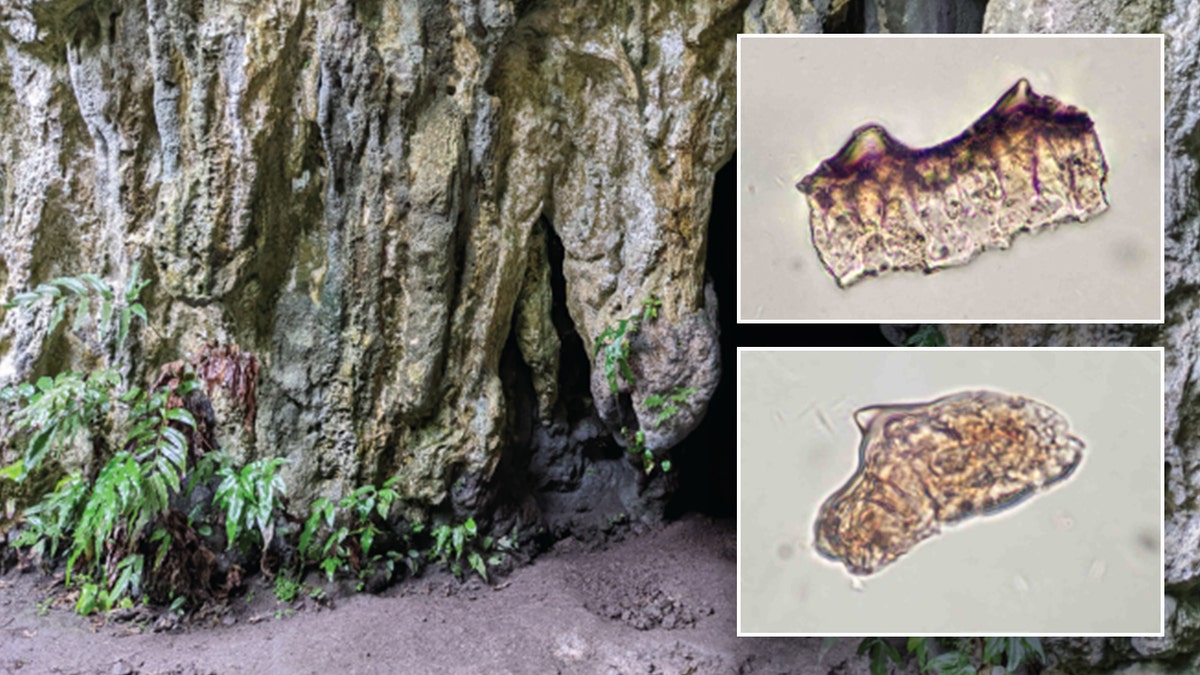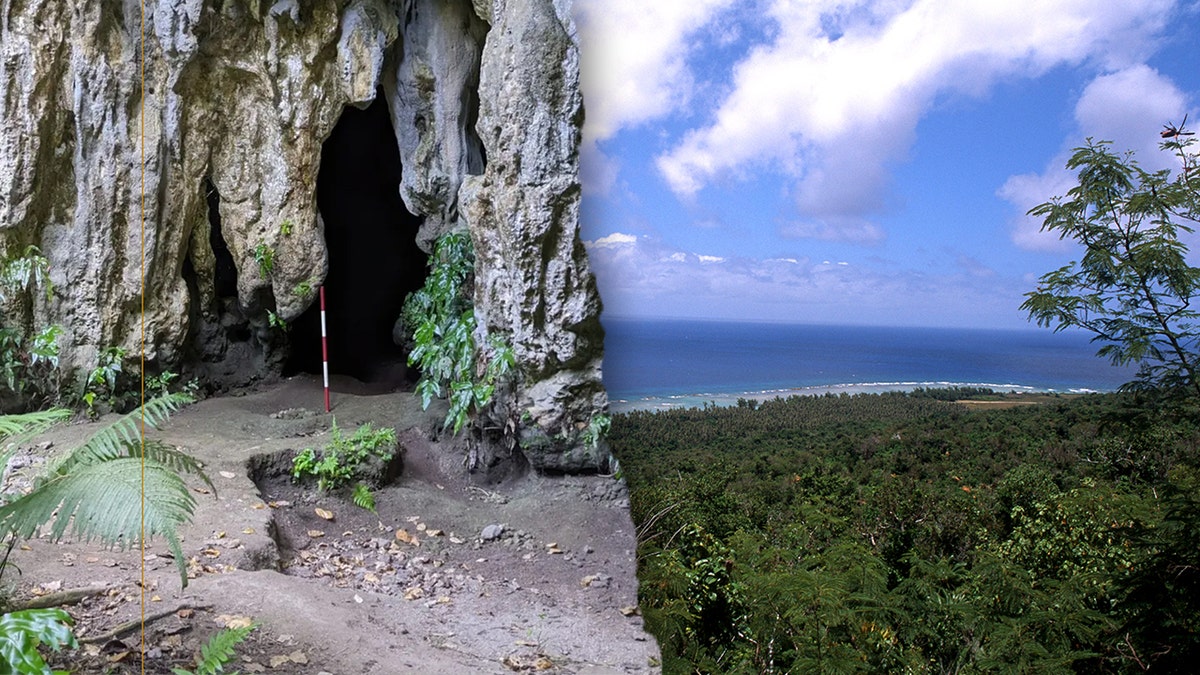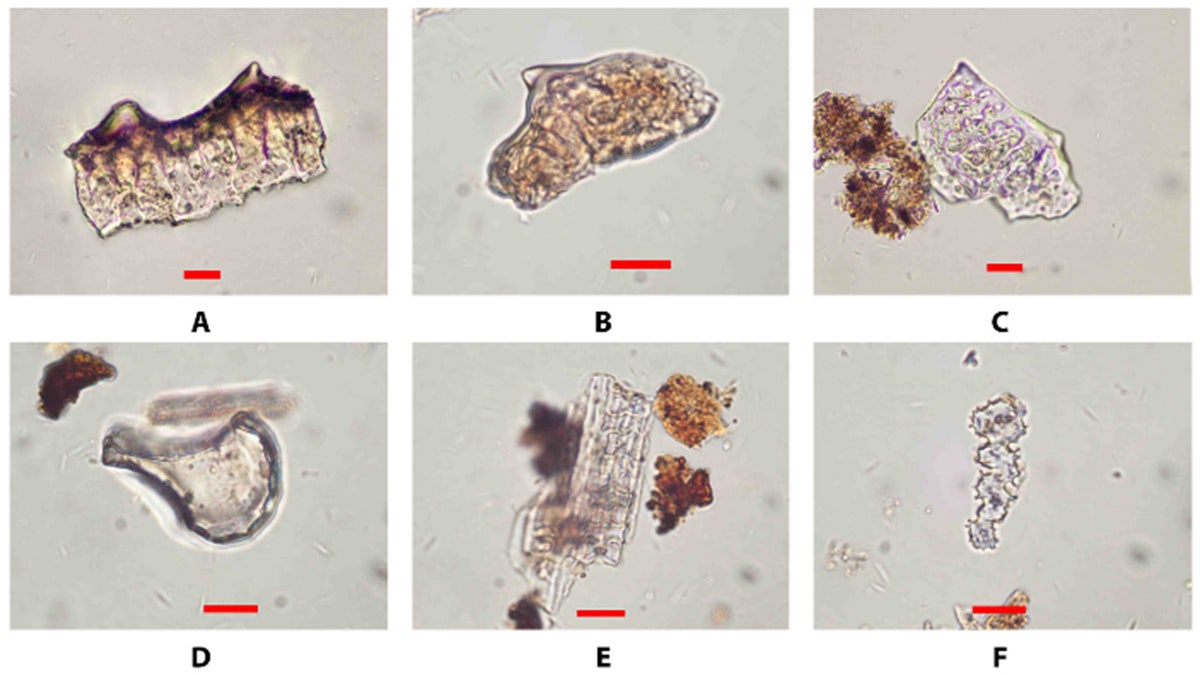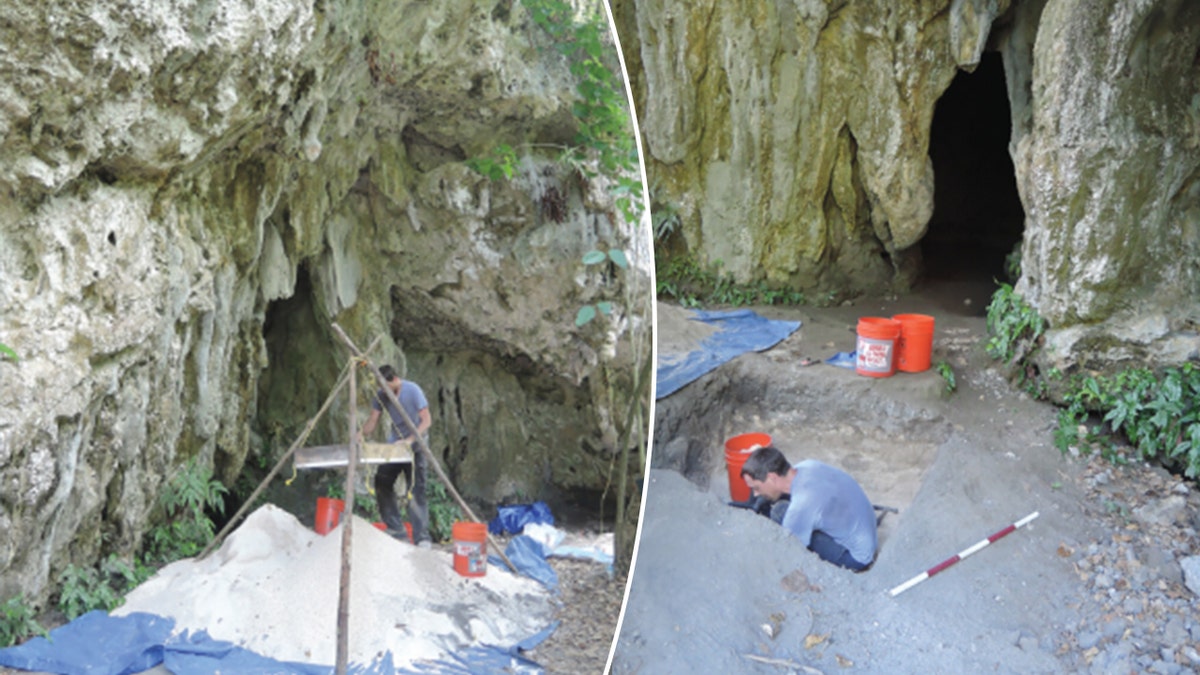NEWYou can now listen to Fox News articles!
The remains of 3,500-year-old rice were recently found in Guam — making it the earliest known evidence of rice in Remote Oceania.
Archaeologists discovered the rice at the Ritidian Site Complex, located at the northernmost point of Guam.
Michael T. Carson, an archaeology professor at the University of Guam in Mangilao, recently published his findings on the discovery in the journal Science Advances.
STUDENTS COOK ANCIENT RICE DISH BASED ON 2,000-YEAR-OLD MANUSCRIPT WITH SURPRISINGLY HEALTHY RESULTS
The archaeologist told Fox News Digital in an interview that the rice remnants were found in the form of phytoliths.
“Phytoliths are like fossils of ancient plant parts,” Carson said.

Archaeologists recently uncovered pottery fragments containing the earliest evidence of rice in Remote Oceania. (Hsiao-chun Hung via Science.org; Michael T. Carson via Science.org)
“The original plant materials were filled primarily with silica materials, lasting for thousands of years and preserving the detailed anatomy that can be observed and authenticated through microscope analysis.”
The phytoliths included multiple instances of the rice husks and leaves, Carson said.
WHY RED WINE IS MORE LIKELY TO GIVE YOU A HEADACHE
The rice was exclusively found on ancient pottery made from earthenware.
“This direct association is extra confident because the phytoliths were 100% absent on other artifacts such as stone and shell tools, as well as 100% absent within the surrounding sedimentary matrix,” he said.

Archaeologists worked at a cave, seen left, at Ritidian Point. The site is near North Ritidian Point, shown at right — the northernmost part of Guam. (Hsiao-chun Hung via Science.org; MyLoupe/UIG via Getty Images)
Experts believe that rice played a role in rituals that were performed in the cave, which also included fine pottery, shell pendants and ornaments.
“Additionally, the cave included rare rock art and formal burial pits,” Carson added.
THIS BREAKFAST MISTAKE MAKES PEOPLE REACH FOR SUGARY SNACKS IN THE AFTERNOON
“The discarded shell remains here included different kinds of shellfish than otherwise comprised the majority of the daily shellfish diet.”
“People probably cooked the rice elsewhere, away from the cave, as grain processing and cooking undoubtedly would have left behind other traces.”
No other cave has the same evidence of rice — adding to the idea that the cave served a “highly specialized” cultural role, according to Carson.
The rice must have been transported by the first settlers of Guam over 3,500 years ago, he noted.

Close-up of ancient rice phytoliths under a microscope. The rice remnants, which were found on pottery, survived some 3,500 years. (Michael T. Carson via Science.org)
“These people traveled across 2,300 km of open ocean, setting a world record [for] long-distance ocean migration at the time,” he said.
“Among their accomplishments, they managed to transport and maintain the rice until they planted and produced successful crops in their new remote-distance island home.”
CLICK HERE TO SIGN UP FOR OUR LIFESTYLE NEWSLETTER
So how did ancient people cook this rice?
Researcher Hsiao-chun Hung told Australian National University (ANU) they probably prepared the rice far away from the cave.
The latest discovery isn’t the first time ancient food has offered a window into the past.
“People probably cooked the rice elsewhere, away from the cave, as grain processing and cooking undoubtedly would have left behind other traces,” the archaeologist said.
A damp environment like the cave would have been “unsuitable for storing unprocessed rice in pots,” she added.

“The ancient rice remains were found only on the surfaces of the pottery, ruling out ordinary food storage.” (Hsiao-chun Hung via Science.org)
“The ancient rice remains were found only on the surfaces of the pottery, ruling out ordinary food storage,” Hung added.
For more Lifestyle articles, visit foxnews.com/lifestyle
The latest discovery isn’t the first time ancient food has offered a window into the past, though such finds remain rare.
Earlier this year, archaeologists uncovered a well-preserved loaf of ancient bread, dating back 5,000 years.
CLICK HERE TO GET THE FOX NEWS APP
In the American Southwest, University of Utah researchers recently uncovered proof of historical food practices by analyzing bedrock “kitchens.”















